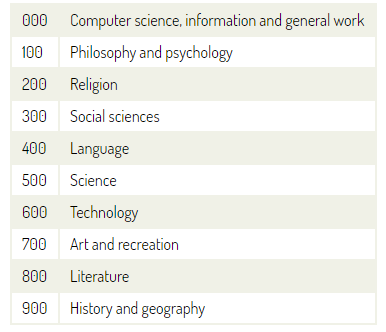Does anyone remember the episode of Arthur when he and Francine were locked in the library? I probably watched that episode hundreds of times as a kid, so it’s no surprise that it’s one of the ones that sticks out the most in my head now. I mean, I don’t see why anyone would try to escape being locked in the library over night. They’re quiet, quaint, have comfortable couches, and I don’t know what the deal was in the libraries of 1996 when this episode first aired (maybe exploring libraries of the 90s will be a post for another day), but they definitely have Internet now – so, what’s the issue, Arthur?
Another thing I remember about Arthur was that beloved ‘Library Card’ song. You know, the one that goes, “Having fun isn’t hard, When you’ve got a library card.” It’s so deeply engrained into my memory that I can’t even look at that sentence without singing it in my head. Well, anyway, a more unpopular line in that song is, “And don’t forget, The Dewey Decimal System is your friend.” If you’re like D.W., this is the point in the song, or post, where you ask yourself who Dewey is.
Melville Louis Kossuth “Melvil” Dewey was an American librarian born in 1851 whose published work in 1876, A Classification and Subject Index for Cataloguing and Arranging the Books and Pamphlets of a Library, became what we know today as the Dewey Decimal System – aka the classification system by which libraries classify their books.
Each book at the library has numbers on its spine and is arranged by subject in numerical order:
The above represents the first set of numbers on the spine – the general subject area of the book. It is then broken down further by adding a decimal, followed by more sections of numbers that are representative of the book’s sub-section. Each sub-section then has ten more divisions of increasing specificity. Subsequently, more letters are added at the end to represent the author or editor of the book.
For example:

Maybe this is why no one answered D.W. when she asked who Dewey was over and over at the end of the song – because there are so many sections upon sections of number and letter combinations, that if they explained every single one to her, they would be at the library all night, and considering the librarian didn’t even bother to check if Francine and Arthur were still around before closing up, I doubt she’d have been too pleased to do so.
One thing is for sure though, almost 25 years ago when the episode emphasized that having fun isn’t hard when you’ve got a library card, they were right – they were right then, they’d be right now, and thanks to our friend, Dewey, it’s a little easier to organize it.
Let’s connect! Goodreads | Twitter






I loved this post! My friends and I adored author growing up and that was by far our favourite episode. Now that song is going to be stuck in my head!
LikeLiked by 1 person
It was mine too!! I can’t believe I remember it after all these years, but with a catchy song like that, it’s hard not to 😂 thank you for reading!!
LikeLike
It is that one and the Jekyll and Hyde song that have stayed with me all these years later!
LikeLiked by 1 person
I was literally just thinking about the Jekyll one too LOL. That was a great episode 👌
LikeLike
[…] you are in the mood for a wave of nostalgia and to learn a little something, check out Cat’s (This is One for the Books) post about the Dewey decimal system. Be warned, you will get the “Library Card” song from Arthur stuck in your […]
LikeLike
[…] Cat at This Is One for the Books told us all about the Dewey Decimal System […]
LikeLike